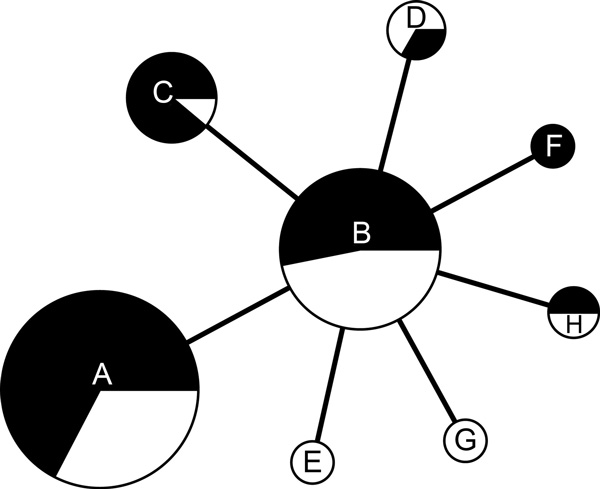Volume 20, Number 5—May 2014
Research
Molecular Investigation of Tularemia Outbreaks, Spain, 1997–2008
Figure 4

Figure 4. Minimum-spanning tree based on multilocus variable number tandem repeat (MLVA) analysis of genotypes showing genetic relationships among 98 Francisella tularensis subspholarctica isolates from Spain with reference to 2 human tularemia outbreaks in 1997–1998 and 2007–2008, respectivelyWhite sections in circles indicate Ftularensis subspholarctica isolates recovered during the first human tularemia outbreak (1997–1998), and black sections indicate isolates recovered during the second outbreak (2007–2008)Each circle represents a unique MLVA type and size is proportional to the number of isolates of that type.
Page created: April 16, 2014
Page updated: April 16, 2014
Page reviewed: April 16, 2014
The conclusions, findings, and opinions expressed by authors contributing to this journal do not necessarily reflect the official position of the U.S. Department of Health and Human Services, the Public Health Service, the Centers for Disease Control and Prevention, or the authors' affiliated institutions. Use of trade names is for identification only and does not imply endorsement by any of the groups named above.